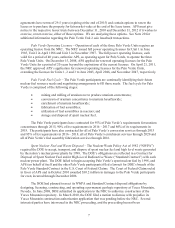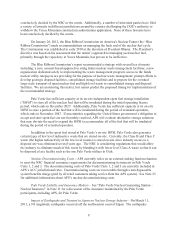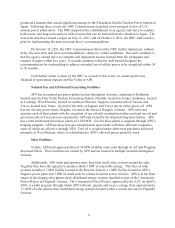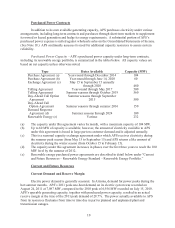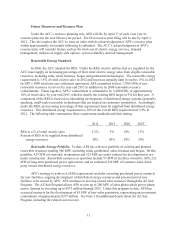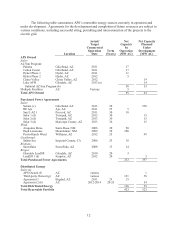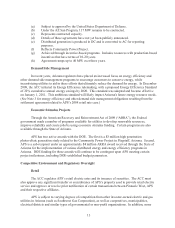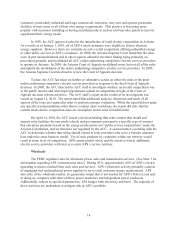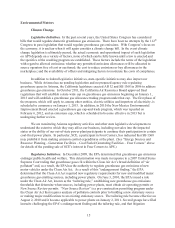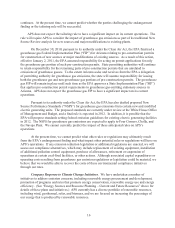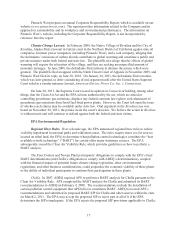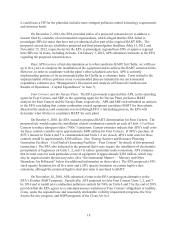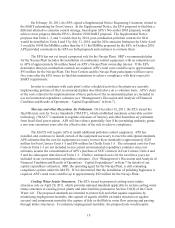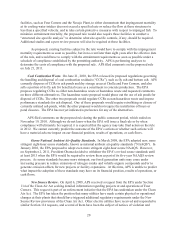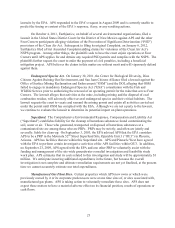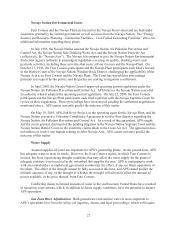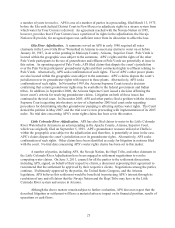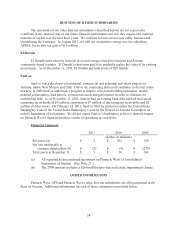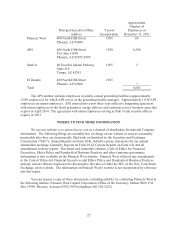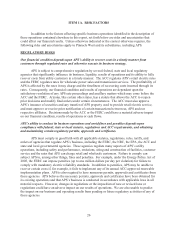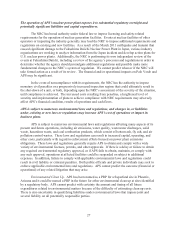APS 2011 Annual Report Download - page 41
Download and view the complete annual report
Please find page 41 of the 2011 APS annual report below. You can navigate through the pages in the report by either clicking on the pages listed below, or by using the keyword search tool below to find specific information within the annual report.17
Pinnacle West prepares an annual Corporate Responsibility Report, which is available on our
website (www.pinnaclewest.com). The report provides information related to the Company and its
approach to sustainability and its workplace and environmental performance. The information on
Pinnacle West’s website, including the Corporate Responsibility Report, is not incorporated by
reference into this report.
Climate Change Lawsuit. In February 2008, the Native Village of Kivalina and the City of
Kivalina, Alaska filed a lawsuit in federal court in the Northern District of California against nine oil
companies, fourteen power companies (including Pinnacle West), and a coal company, alleging that
the defendants’ emissions of carbon dioxide contribute to global warming and constitute a public and
private nuisance under both federal and state law. The plaintiffs also allege that the effects of global
warming will require the relocation of the village, and they are seeking an unspecified amount of
monetary damages. In June 2008, the defendants filed motions to dismiss the action, which were
granted. The plaintiffs filed an appeal with the Ninth Circuit Court of Appeals in November 2009, and
Pinnacle West filed its reply on June 30, 2010. On January 24, 2011, the defendants filed a motion,
which was later granted, to defer calendaring of oral argument until after the United States Supreme
Court ruled in a similar nuisance lawsuit, American Electric Power Co., Inc. v. Connecticut.
On June 20, 2011, the Supreme Court issued its opinion in Connecticut holding, among other
things, that the Clean Air Act and the EPA actions authorized by the act, which are aimed at
controlling greenhouse gas emissions, displace any federal common law right to seek abatement of
greenhouse gas emissions from fossil fuel-fired power plants. However, the Court left open the issue
of whether such claims may be available under state law. Oral argument in the Kivalina case was
heard on November 28, 2011; the parties await the court’s decision. We believe the action in Kivalina
is without merit and will continue to defend against both the federal and state claims.
EPA Environmental Regulation
Regional Haze Rules. Over a decade ago, the EPA announced regional haze rules to reduce
visibility impairment in national parks and wilderness areas. The rules require states (or, for sources
located on tribal land, the EPA) to determine what pollution control technologies constitute the “best
available retrofit technology” (“BART”) for certain older major stationary sources. The EPA
subsequently issued the Clean Air Visibility Rule, which provides guidelines on how to perform a
BART analysis.
The Four Corners and Navajo Plant participants’ obligations to comply with the EPA’s final
BART determinations (and Cholla’s obligations to comply with ADEQ’s determinations), coupled
with the financial impact of potential future climate change legislation, other environmental
regulations, and other business considerations, could jeopardize the economic viability of these plants
or the ability of individual participants to continue their participation in these plants.
Cholla. In 2007, ADEQ required APS to perform a BART analysis for Cholla pursuant to the
Clean Air Visibility Rule. APS completed the BART analysis for Cholla and submitted its BART
recommendations to ADEQ on February 4, 2008. The recommendations include the installation of
certain pollution control equipment that APS believes constitutes BART. ADEQ reviewed APS’s
recommendations and submitted its proposed BART SIP for Cholla and other sources within the state
on March 2, 2011. The EPA may accept the proposed SIP or reject part or all of it if the EPA
determines the SIP is inadequate. If the EPA rejects the proposed SIP provisions applicable to Cholla,


